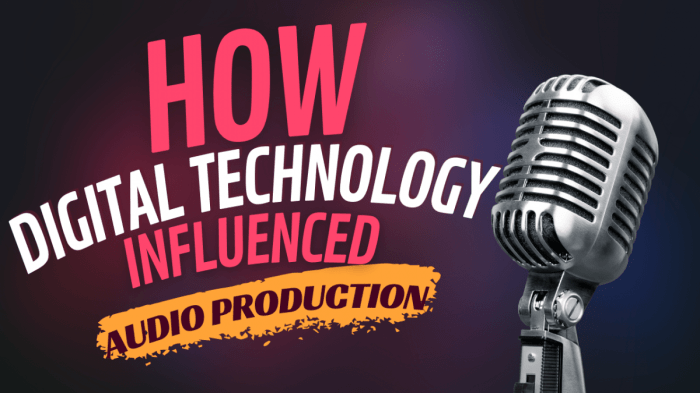Pemanfaatan Teknologi Blockchain Dalam Verifikasi Sertifikat Pendidikan

“Pemanfaatan Teknologi Blockchain dalam Verifikasi Sertifikat Pendidikan”—dengarnya kayak sesuatu yang super canggih, kan? Bayangkan: nggak lagi ribet urus verifikasi ijazah, nggak ada lagi dokumen palsu bertebaran. Blockchain, teknologi di balik Bitcoin, bisa bikin sistem pendidikan jadi super aman dan transparan.
Ini solusi keren banget buat masalah verifikasi sertifikat pendidikan yang selama ini bikin kita pusing tujuh keliling!
Sistem verifikasi sertifikat pendidikan konvensional seringkali menghadapi masalah seperti pemalsuan dokumen, proses verifikasi yang lambat, dan kurangnya transparansi. Teknologi blockchain, dengan sifatnya yang terdesentralisasi, aman, dan transparan, menawarkan solusi yang lebih efisien dan andal. Dengan blockchain, setiap sertifikat pendidikan tercatat secara permanen dan dapat diverifikasi dengan mudah dan cepat oleh siapa pun, kapan pun.
Sistem ini menjanjikan revolusi dalam dunia pendidikan, memastikan integritas dan kredibilitas sertifikat pendidikan secara global.
Verifikasi Sertifikat Pendidikan: Level Up dengan Blockchain
Bayangin deh, lo udah susah payah ngejar mimpi, lulus sekolah, dapetin sertifikat. Tapi pas mau apply kerja, proses verifikasi sertifikatnya ribet banget, lama, dan bikin kepala pusing. Sistem verifikasi tradisional seringkali bikin frustrasi, bukan? Nah, teknologi blockchain hadir sebagai solusi super kece untuk masalah ini.
Ini bakal ngebantu proses verifikasi jadi lebih cepat, aman, dan transparan—bener-bener game changer!
Blockchain, secara sederhana, adalah database terdistribusi dan aman yang menyimpan informasi secara permanen dan transparan. Bayangin kayak buku catatan digital yang dibagi-bagi ke banyak komputer, jadi nggak ada satu pun yang bisa ngubah atau hapus datanya seenaknya. Setiap transaksi atau perubahan data direkam dalam “blok” dan dihubungkan ke blok sebelumnya, membentuk rantai (blockchain) yang nggak bisa diutak-atik.
Keren, kan?
Verifikasi Sertifikat Pendidikan Konvensional dan Tantangannya
Sistem verifikasi konvensional biasanya melibatkan pengiriman dokumen fisik atau permintaan verifikasi melalui email atau telepon ke lembaga pendidikan. Proses ini seringkali memakan waktu berminggu-minggu, bahkan berbulan-bulan. Selain itu, risiko pemalsuan dokumen juga cukup tinggi, dan transparansi proses verifikasi kurang jelas.
Bisa dibilang, sistem ini “old school” dan kurang efisien.
Penerapan Blockchain dalam Verifikasi Sertifikat
Dengan blockchain, sertifikat pendidikan bisa direkam sebagai data digital yang terenkripsi dan disimpan di dalam blockchain. Setiap perubahan atau verifikasi akan tercatat secara permanen dan transparan di blockchain, sehingga keabsahan sertifikat mudah diverifikasi kapan saja dan di mana saja.
Proses ini otomatis dan terdesentralisasi, sehingga mengurangi risiko pemalsuan dan mempercepat waktu verifikasi.
Perbandingan Sistem Verifikasi Tradisional dan Berbasis Blockchain
Berikut tabel perbandingan untuk lebih jelasnya. Liat aja bedanya, jauh banget kan?
| Metode Verifikasi | Kecepatan Verifikasi | Keamanan | Biaya |
|---|---|---|---|
| Pengiriman dokumen fisik, verifikasi manual | Lambat (minggu-bulan) | Rendah (mudah dipalsukan) | Relatif tinggi (biaya pengiriman, administrasi) |
| Verifikasi digital berbasis blockchain | Cepat (menit-jam) | Tinggi (terenkripsi, terdistribusi) | Relatif rendah (biaya transaksi blockchain) |
Manfaat Potensial Blockchain dalam Verifikasi Sertifikat Pendidikan
Keunggulan blockchain dalam verifikasi sertifikat pendidikan nggak cuma sekedar kecepatan dan keamanan. Bayangin deh, ini bisa ngebuka akses pendidikan yang lebih luas, mengurangi birokrasi, dan meningkatkan kepercayaan terhadap kredibilitas sertifikat. Ini semua berdampak positif banget, terutama untuk calon pekerja dan lembaga pendidikan itu sendiri.
- Efisiensi waktu:Verifikasi yang jauh lebih cepat.
- Keamanan yang tinggi:Mencegah pemalsuan sertifikat.
- Transparansi yang terjamin:Riwayat verifikasi mudah dilacak.
- Pengurangan biaya:Biaya administrasi dan verifikasi yang lebih rendah.
- Aksesibilitas yang lebih luas:Memudahkan akses ke peluang kerja global.
Mekanisme Implementasi Blockchain dalam Verifikasi Sertifikat Pendidikan
Yo, peeps! Bayangkan dunia tanpa sertifikat palsu—sounds pretty rad, right? Blockchain is like the ultimate cheat code to make that happen. It’s a super secure, transparent system that can totally revamp how we verify education credentials. This section breaks down how it all works, from representing your diploma on the blockchain to the actual verification process.
Get ready to level up your understanding!
Representasi Data Sertifikat Pendidikan pada Blockchain
Think of a blockchain like a super-secure digital ledger, shared publicly but impossible to tamper with. Each student’s certificate is represented as a “block” containing crucial info like name, school, degree, and graduation date. This data is hashed—meaning it’s converted into a unique fingerprint—and added to the chain.
Once it’s on the chain, it’s practically untouchable. No more shady alterations!
Arsitektur Sistem Verifikasi Sertifikat Pendidikan Berbasis Blockchain, “Pemanfaatan Teknologi Blockchain dalam Verifikasi Sertifikat Pendidikan”
The system’s architecture is pretty slick. It involves several key players: educational institutions (issuers), students (holders), and verifiers (employers, universities, etc.). Educational institutions use specialized software to create and upload verified certificates onto the blockchain. Students have access to their digital credentials, while verifiers can independently confirm their authenticity by querying the blockchain.
The whole thing is designed for maximum transparency and security.
- Educational Institutions:These guys are the originators, responsible for issuing and recording certificates on the blockchain.
- Students:They receive a unique, verifiable digital certificate that they can share securely.
- Verifiers:These are the folks who need to check the authenticity of a certificate, such as employers or other educational institutions.
- Blockchain Network:This is the decentralized, immutable ledger that stores all the certificate data.
Peran Teknologi Enkripsi dan Hash dalam Keamanan dan Integritas Data
Security is key, and that’s where encryption and hashing come in. Encryption keeps the sensitive data in your certificate private—think of it as a super-strong password protecting your info. Hashing creates those unique fingerprints we talked about earlier. Even a tiny change to the certificate data completely alters its hash, instantly revealing any tampering attempts.
It’s like a super-powered tamper-evident seal.
Proses Verifikasi Sertifikat Menggunakan Blockchain
The verification process is straightforward and totally transparent. When a verifier needs to check a certificate, they simply access the blockchain and search for the corresponding hash. If the hash matches the data on the certificate, it’s legit! No more chasing down transcripts or dealing with potentially forged documents.
This whole process, from issuance to verification, is streamlined and super efficient.
- Issuance:The educational institution creates and digitally signs the certificate, then adds it to the blockchain.
- Storage:The certificate’s data, including its unique hash, is permanently stored on the blockchain.
- Verification:A verifier retrieves the certificate’s hash from the blockchain and compares it to the hash on the provided certificate. A match confirms authenticity.
Diagram Alur Verifikasi Sertifikat Pendidikan Menggunakan Blockchain
Imagine a flowchart. It starts with the institution creating and digitally signing the certificate. This certificate then gets hashed and added to the blockchain as a new block. When verification is needed, the verifier accesses the blockchain, retrieves the certificate’s hash, and compares it to the hash on the presented certificate.
A match confirms its validity. The whole process is automated and transparent, eliminating the need for intermediaries and significantly reducing the risk of fraud.
Tantangan dan Pertimbangan Implementasi
Yo, peeps! Membangun sistem verifikasi sertifikat pendidikan berbasis blockchain? Sounds totally rad, right? But hold up, it ain’t all sunshine and rainbows. There are some serious hurdles to jump over before we can ditch those dusty paper certificates for good.
Let’s dive into the real-world challenges – the stuff that keeps us up at night, you know?
Tantangan Teknis dan Non-Teknis
Implementing this tech isn’t just about coding; it’s about navigating a whole bunch of logistical and technical snags. Think about it: you’re dealing with sensitive data, complex systems, and maybe even some bureaucratic red tape. It’s a total brain twister, but definitely doable with the right strategy.
- Integrasi Sistem:Connecting the blockchain system with existing educational databases and student information systems can be a massive undertaking. Think of it like trying to merge two totally different social media platforms – it’s a major project.
- Keterampilan Teknis:You need a seriously skilled team to build and maintain this thing. Finding developers who are experts in both blockchain and educational technology isn’t exactly easy.
- Penerimaan dari Institusi Pendidikan:Convincing schools and universities to adopt a new system requires a whole lot of convincing and education. Some might be hesitant to change their old ways, which is totally understandable.
Skalabilitas, Interoperabilitas, dan Regulasi
Scaling a blockchain system to handle millions of certificates is a huge challenge. And making sure different blockchain systems can talk to each other (interoperability) is another level of complexity. Plus, we’ve gotta navigate the wild world of regulations and compliance – it’s a legal minefield out there!
- Skalabilitas:As more and more institutions join the network, the system needs to be able to handle the increased volume of transactions without slowing down. Think of it like trying to keep a massive online game running smoothly during peak hours.
- Interoperabilitas:Different educational institutions might use different blockchain platforms. Ensuring seamless data exchange between these systems is crucial for widespread adoption. It’s like making sure all your devices can communicate with each other, no matter what brand they are.
- Regulasi:The legal landscape surrounding blockchain technology is still evolving. Navigating data privacy laws and other regulations is essential to avoid legal issues. This is like making sure you’re following all the rules of the road when driving a new type of vehicle.
Privasi dan Keamanan Data
Protecting student data is paramount. Blockchain offers some unique security advantages, but it’s not a magic bullet. We need to think carefully about how to balance transparency with privacy. This is a big deal, like keeping a super-secret password safe.
- Enkripsi Data:Robust encryption is key to protecting sensitive information from unauthorized access. Think of it like using a super-strong lock on your most valuable possessions.
- Pengendalian Akses:Implementing strict access controls to ensure only authorized individuals can view and modify data is essential. This is like having a VIP list for a super exclusive party.
- Anonimitas:Exploring techniques to ensure student anonymity while maintaining the integrity of the system is a complex challenge. Think of it like being able to verify someone’s identity without revealing their personal details.
Biaya dan Sumber Daya
Let’s be real, building and maintaining a blockchain system ain’t cheap. It requires significant upfront investment in infrastructure, software development, and ongoing maintenance. It’s like planning a major concert – you need a big budget and a solid team.
- Infrastruktur:Setting up the necessary hardware and software infrastructure can be expensive, especially for a large-scale system. Think of it as the cost of building a state-of-the-art recording studio.
- Pengembangan Perangkat Lunak:Hiring skilled developers and paying for their time and expertise is a major cost factor. This is like paying top-dollar for a talented band to perform at your concert.
- Pemeliharaan:Ongoing maintenance, updates, and security audits are essential to ensure the system’s long-term stability and security. This is like paying for the ongoing upkeep of a concert venue.
Daftar Tantangan dan Solusi Potensial
Here’s a quick rundown of some common challenges and potential solutions. Think of it as a cheat sheet for navigating the blockchain jungle.
| Tantangan | Solusi Potensial |
|---|---|
| Tingginya biaya implementasi | Kerjasama antar lembaga pendidikan, pendanaan pemerintah |
| Kurangnya tenaga ahli blockchain | Pelatihan dan pengembangan sumber daya manusia |
| Kekhawatiran privasi data | Penerapan teknologi enkripsi yang kuat dan mekanisme akses yang terkontrol |
| Kompleksitas teknis | Pengembangan solusi yang user-friendly dan dokumentasi yang komprehensif |
| Hambatan regulasi | Advokasi kebijakan yang mendukung dan kerjasama dengan regulator |
Ulasan Penutup: “Pemanfaatan Teknologi Blockchain Dalam Verifikasi Sertifikat Pendidikan”

So, goodbye to the days of stressing over fake diplomas and slow verification processes! Blockchain is here to revolutionize education, making things way easier and more secure. It’s like a total game-changer, making sure your hard-earned achievements are always legit and easily verifiable.
Totally awesome, right?
Pertanyaan Umum (FAQ)
Apakah blockchain akan menggantikan sepenuhnya sistem verifikasi sertifikat pendidikan konvensional?
Belum tentu. Blockchain kemungkinan besar akan menjadi pelengkap, meningkatkan sistem yang sudah ada dengan menambahkan lapisan keamanan dan transparansi.
Bagaimana blockchain mengatasi masalah privasi data siswa?
Melalui teknik enkripsi dan kontrol akses yang ketat, data pribadi siswa dapat dijaga kerahasiaannya, hanya informasi yang relevan untuk verifikasi yang dipublikasikan.
Berapa biaya implementasi sistem verifikasi sertifikat berbasis blockchain?
Biaya bervariasi tergantung skala dan kompleksitas implementasi. Faktor-faktor seperti infrastruktur, pengembangan perangkat lunak, dan pelatihan personel perlu dipertimbangkan.




